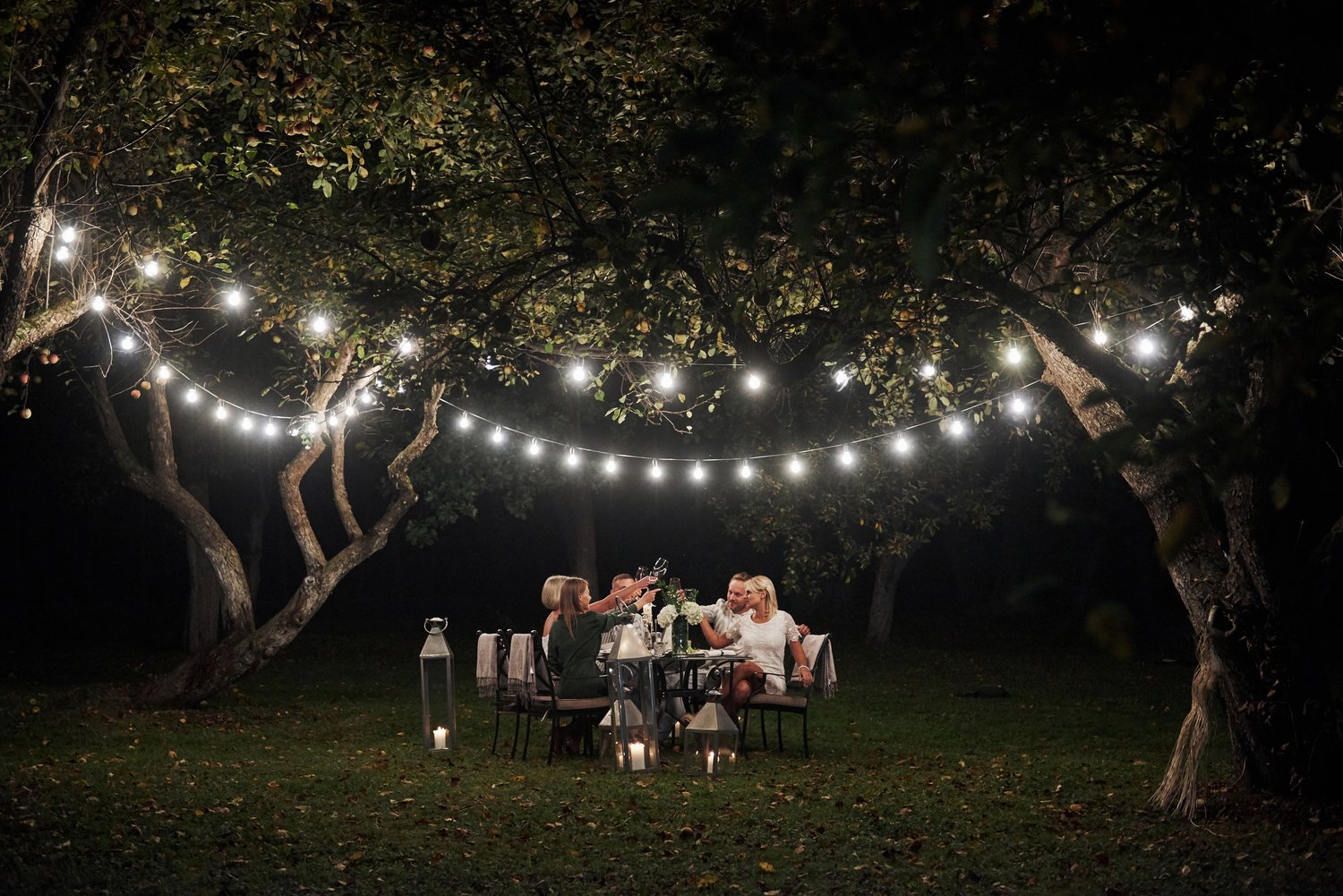Imagine stepping into your garden at night, greeted by a beautifully lit pathway that not only enhances the aesthetics but also boosts the security of your home. Outdoor lighting installation is more than just about adding brightness—it’s about creating a welcoming ambiance while ensuring safety. Delving into the essentials of this process can transform your home’s exterior, making it more functional and inviting.
- Explore diverse outdoor lighting options that can significantly impact your home’s ambiance and security.
- Discover what factors to consider when selecting the right outdoor lighting fixtures for your unique space.
- Understand why thorough planning and safety assessments are crucial before embarking on your lighting installation journey.
- Gain insights into maintaining your lighting setup and troubleshooting techniques to ensure long-lasting illumination.
By reading further, you’ll uncover comprehensive guidance that equips you with practical knowledge to illuminate your outdoor spaces with confidence and style. Prepare to elevate your home’s curb appeal while maximizing safety through strategic outdoor lighting installations.
Understanding Outdoor Lighting Installation Basics
Outdoor lighting enhances not only the aesthetic appeal of your home but also its security. By understanding the different types of outdoor lighting, you can create an inviting and safe environment.
One popular option is landscape lighting, which highlights pathways, gardens, and architectural features. This form of exterior lighting is often low-voltage, making it energy-efficient while adding a touch of elegance to your surroundings.
Another crucial component is security lighting. These lights are typically equipped with motion sensors, which deter unwanted visitors and provide peace of mind. Placing them strategically around entry points and dark areas can significantly enhance your home’s safety.
For a cozy atmosphere, consider decorative string lights. These versatile lights are perfect for patios and pergolas, offering a warm glow that transforms your outdoor area into a charming retreat.
Finally, spotlights are excellent for accentuating specific features, such as a majestic tree or a water fountain, adding drama and focus to your landscape.
By exploring these outdoor lighting options, you can enhance the ambiance and improve the security of your home, creating a space that’s both beautiful and safe.
Choosing the Right Outdoor Lighting Fixtures
Selecting the right outdoor lighting fixtures is vital to achieving the desired effect in your exterior spaces. With various styles and functions, finding the perfect fixtures involves several considerations.
Start by assessing the purpose of your lighting. Are you aiming to increase security, enhance aesthetic appeal, or simply illuminate certain areas for practicality? Understanding this will guide your fixture choice.
The style of your home and outdoor decor should influence your selection. Fixtures that complement your home’s architecture and landscape design will offer a cohesive look, enhancing curb appeal.
Consider the durability and materials of fixtures, especially if they will be exposed to harsh weather conditions. Options like stainless steel, copper, or powder-coated aluminum provide longevity and resistance to environmental wear.
Energy efficiency is another crucial factor. LED fixtures, for instance, offer long-lasting brightness and consume less energy than traditional bulbs, making them a sustainable choice.
Finally, think about installation and maintenance. Some fixtures may require professional installation, while others are easily integrated into existing systems. Opt for options that meet your skill level and maintenance preferences.
By carefully considering these factors, you can select outdoor lighting fixtures that not only meet your functional needs but also enhance the beauty and security of your home.
Preparing for Outdoor Lighting Installation Basics
Before diving into the installation process, it’s crucial to thoroughly plan and prepare. The success of your outdoor lighting installation hinges on this initial phase. Begin by assessing your outdoor space to identify areas where lighting is needed. Consider aspects such as pathways, driveways, gardens, and entry points to determine the optimal spots for fixtures.
Safety is paramount during any installation process. Make sure to review all relevant safety guidelines and take necessary precautions. This includes locating underground utilities before digging and ensuring any electrical work is performed safely. Utilize tools such as voltage testers to confirm there are no live wires that could pose a hazard during installation.
Planning your lighting layout is also essential. Sketch a rough outline of your yard, indicating where you want lights to be positioned. This helps ensure you have a clear vision and can acquire the necessary equipment. Decide on the voltage system — low voltage options are popular due to their ease of installation and cost-effectiveness.
Step-by-Step Guide to Outdoor Lighting Installations
Embarking on your outdoor lighting journey involves multiple steps, each requiring careful attention. This step-by-step guide will help you achieve professional results.
Firstly, gather all necessary tools and materials, including lighting fixtures, cables, transformers, connectors, and a timer if needed. Make sure to have a clear understanding of the electrical requirements for your specific fixtures.
Begin by installing the transformer, which reduces the standard household voltage to a safe level for outdoor lighting. Mount it close to a GFCI outlet for convenience and safety.
Next, lay out the cables according to your plan. Cut the cable to the necessary lengths and use waterproof connectors to attach it to the fixtures. Ensure all wires are buried to an appropriate depth to prevent any tripping hazards.
Once the cables are in place, start installing the lighting fixtures. Securely mount them in the predetermined locations, making sure they are positioned correctly to achieve the desired lighting effect. After all fixtures are installed, connect them to the power source via the transformer.
Finally, meticulously test the entire system. Ensure each light functions correctly and adjust positions if needed to refine the lighting landscape. Regular testing and adjustments will enhance both the aesthetic and functional aspects of your outdoor lighting, ensuring optimal performance.
Maintenance and Troubleshooting Outdoor Lighting Systems
Outdoor lighting systems play a crucial role in enhancing the beauty and security of your home’s exterior. However, just like any other electrical system, they require regular maintenance to ensure optimal performance. By conducting routine outdoor lighting maintenance, you can extend the lifespan of your lights and prevent common issues.
Start by inspecting your lighting fixtures and bulbs every season. This involves checking for dirt, debris, or moisture that may have accumulated. Keeping the fixtures clean not only helps them function better but also prolongs their life. Replace any burnt-out bulbs promptly to maintain consistent illumination.
Pay attention to wiring connections. Ensure all connections are secure and there are no exposed wires that could pose a safety risk. If you notice any signs of wear or damage, consider consulting a professional to avoid potential electrical hazards.
Another key aspect of maintaining outdoor lighting is adjusting the settings of timers or motion sensors. Seasonal changes can affect the timing of darkness and dawn, so recalibrate these settings to ensure your lighting operates at the desired times. This adjustment enhances energy efficiency and lowers electricity costs.
Troubleshooting outdoor lighting can often be straightforward if you know where to start. If a fixture isn’t working, check the breaker box first to ensure the circuit hasn’t tripped. If the circuit is intact, inspect the bulb and replace it if necessary. For solar-powered lights, ensure the solar panels are clean and receiving adequate sunlight during the day.
In cases where multiple lights are failing, the issue might lie in the central transformer. Ensure it’s functioning properly and consult a professional if a replacement is necessary.
By staying on top of regular maintenance and using effective troubleshooting techniques, your outdoor lighting system can continue to function optimally year-round. This proactive approach not only keeps your home illuminated but also enhances safety and aesthetics.
Frequently Asked Questions: Outdoor Lighting Installation
What are the advantages of installing outdoor lighting?
Outdoor lighting enhances security and aesthetics by illuminating pathways, highlighting landscaping, and deterring intruders.
Which types of lighting fixtures are best for outdoor use?
Weather-resistant fixtures, such as LED, solar, and motion sensor lights, are ideal for outdoor use due to their durability and energy efficiency.
How do I choose the right lighting for my outdoor space?
Consider your goals: Choose task lighting for function, ambient lighting for mood, and accent lighting to highlight features.
What safety precautions should I follow during installation?
Prioritize safety by ensuring electrical connections are weatherproof, turning off power, and consulting a professional if unsure.
How can I maintain my outdoor lighting system?
- Regularly clean fixtures to remove debris
- Check for damaged wires
- Replace bulbs as needed
What are common troubleshooting tips for outdoor lighting?
- Ensure power sources are active
- Inspect and reset circuit breakers
- Replace faulty bulbs





